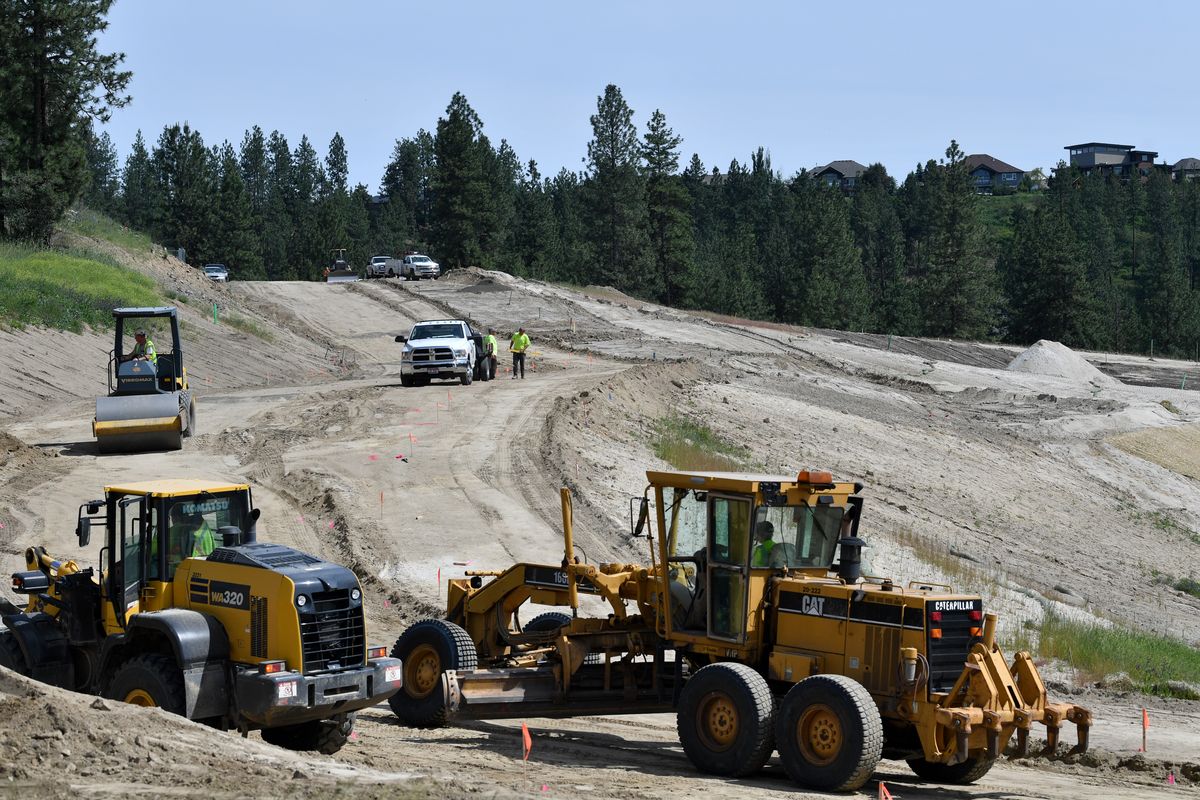Wildlife concerns lead to pause on plans for water connection to Five Mile development

Spokane will not move forward with constructing a $240,000 water main between two large tanks on the slopes leading to Five Mile Prairie, with city lawmakers citing concerns about the habitat of deer and bats that live in the area.
The city’s Public Works Division brought forward a contract for the work, which they said was necessary to ensure water sitting unused in a 1.1-million gallon tank constructed a decade ago on county property wouldn’t go stagnant. Officials were also concerned about the need for a backup system to provide water for fire suppression should the single existing pump in the area fail.
But the project would require clear-cutting a 30-foot swath of forested area just outside of city limits.
City Councilwoman Candace Mumm, who has taken a hard stance in the past on water expansion projects , said the city had a duty if it was building a water line to protect the environment.
The city’s Public Works division did not conduct an environmental review before putting the project out for public bids, deeming the project exempt from such scrutiny.
“That area creates a connection to the entire ecosystem of Five Mile,” Mumm said.
Most of her colleagues on the City Council agreed, indefinitely tabling a contract with LaRiviere to build the roughly 2,000-foot-long pipe. Public Works Director Scott Simmons said the council’s 6-1 vote tabling the contract in effect nixed the contract, leaving the city with the same issues of stagnation and potential lack of firefighting ability if a pump failed.
“The contract is going to be null and void now, that no longer is in play,” Simmons said. “We are contacting the contractor to let them know that.”
The city would have built the line west to the boundary of a planned 138-home development proposed by MSK LLC. Crews were already out leveling land in the area for the development earlier this month after Spokane’s Hearing Examiner approved the project in February. The developers, represented by Whipple Consulting Engineering, had been coordinating with the city to ensure hookup to the system after granting the city access to the land for the underground pipe two years ago.
Todd R. Whipple, president of the firm, said in a statement that the decision perpetuated the risk of disastrous fire for existing homes in the area.
“There is a significant public health and safety risk that the City Council needs to resolve,” Whipple said.
But Mumm pointed to a map of area fire hydrants and noted that pressure levels were adequate for firefighting. She also noted that the developer owns the land and could build their own transmission line directly to the nearby tank, without putting the burden on city ratepayers.
“We’re thinking about the timing of this expense for our ratepayers, even as we’re potentially revising our water rates, post-COVID,” Mumm said, noting also that even if the city completed its work, the developer would still have to build and connect the two systems. The developer had not provided assurance that would happen prior to the contract, Mumm said.
Cost is the reason city Councilman Mike Cathcart voted against nixing the contract. The $240,000 price tag is far less than what other connections to avoid wildlife effects might cost, according to rough estimates from city engineers.
“It’s a benefit to the city, based on what staff has said, and this is the most economical way to do it,” Cathcart said.
City Councilwoman Karen Stratton, who along with Mumm represents the Indian Trail neighborhood where the project would be built, said maintaining the area’s natural feel was important to residents. The project is within an area designated as a priority habitat by the Washington Department of Fish and Wildlife for white-tailed deer and a species of bat similar to the little brown bat.
“I think there’s an understanding there’s going to be development up there, but we want to make sure we’re not harming any natural areas that are up there,” Stratton said. “We have to be really smart about this.”
Simmons acknowledged that the developer could hook up to city water on their own. But they’d be building an 8-inch main, a smaller line than what the city would want to build, and it wouldn’t solve the city’s stagnation and fire suppression problems.
Mumm said she’s working with city staff to ensure environmental reviews occur on city projects before they’re out to bid. The councilwoman said the city’s elected leaders have a duty to consider ecological effects of building, even if those projects do not fall under the typical standards for review.
“Whether it’s inside the city or outside the city, we have a responsibility to the environment,” Mumm said. “We want to make sure that we’re not damaging the environment in the process.”